It was a rainy afternoon in Milan, the kind of day that makes you want to linger inside, but I was anything but disappointed. In fact, I was about to step into one of the most extraordinary fashion experiences of my life—Dolce&Gabbana’s “From the Heart to the Hands” exhibition, housed in the breathtaking Palazzo Reale.
As we waited in line for our reserved time slot, I couldn’t help but feel the buzz of excitement. The grandeur of the palazzo loomed above, its intricately carved walls and ceilings hinting at the magic that awaited inside. Once we entered, a large screen flashed iconic Dolce&Gabbana imagery, teasing the brand’s rich history and passion for Italy. We handed our umbrellas and coats to the impeccably dressed staff and with a final check of our e-tickets, the journey began.
The exhibition was like stepping into Dolce&Gabbana’s personal love letter to Italy. Each room felt like a chapter in a story—elegant, sensual, and at times cheeky and rebellious, just like the fashion house itself. Curated by Florence Müller and produced by IMG, the exhibition wove a tapestry of Italy’s cultural richness, where tradition met high fashion in the most unexpected ways. The way Domenico Dolce and Stefano Gabbana had drawn inspiration from their homeland was palpable in every stitch, bead, and fold of fabric.
Handmade
The first room greeted us with Dolce&Gabbana’s classic, iconic designs from the 1990s. I was immediately drawn to the details—intricate carvings, delicate thread embroidery, and breathtakingly beautiful flowers woven into the garments. The pieces didn’t just hang on mannequins—they told the stories of Italian artisans, from the skilled hands that crocheted delicate lace to the bold visions that turned ancient traditions into avant-garde fashion. It was like time-traveling through the evolution of style, with Italy as both the backdrop and muse.
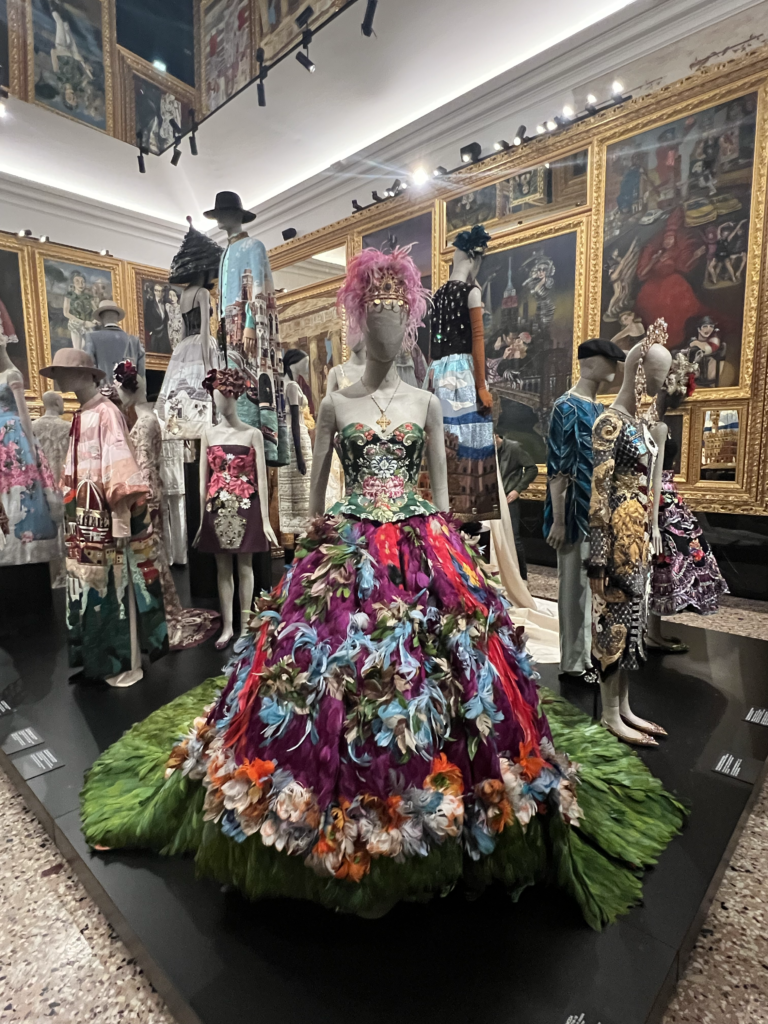
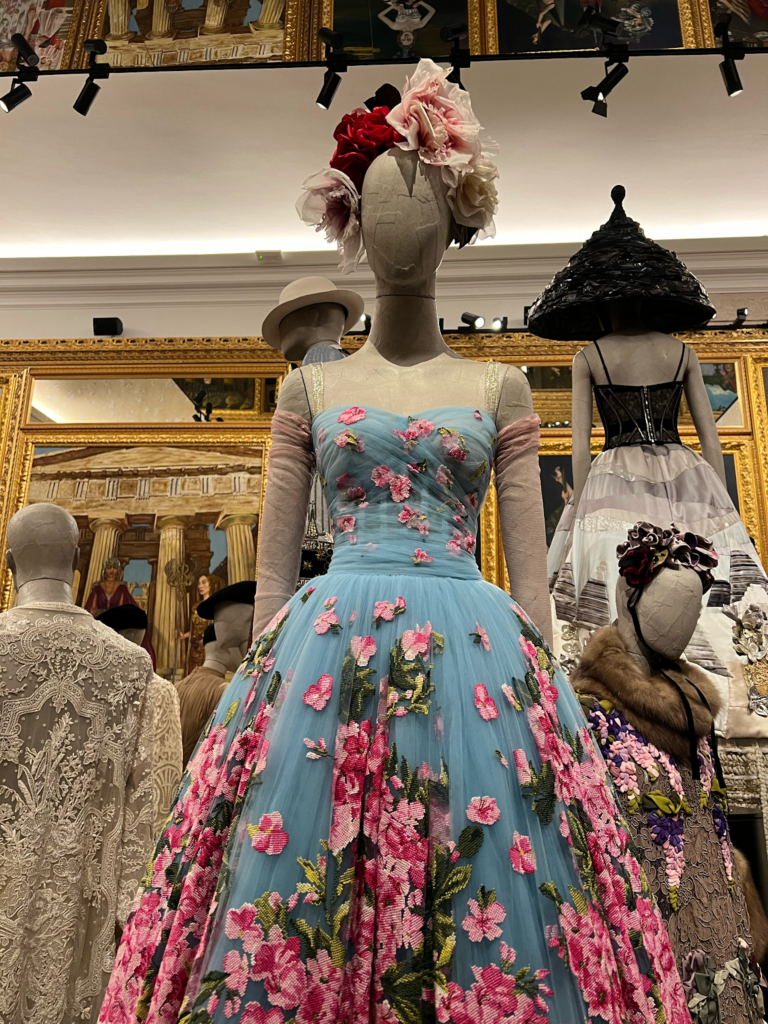
The exhibition felt like entering another dimension, where every room was its own little world, separated by luxurious, thick velvet curtains. These curtains weren’t just for aesthetics; they acted as portals, soundproofing each room’s unique music and scent. With each curtain pull, it was as though I was being transported to a different universe—each one with its own mood, its own vibe, its own story.
The Art & Craft of Glassworking
The first curtain led me into a sparkling dream. At first glance, you’d think everything shimmered because of crystals, but that would only be half the truth. The glimmering magic was actually the result of centuries-old Venetian glassworking. Shattering glass sparkled in the background, reflecting off gowns delicately encrusted with glass ornaments. Metallic floral patterns, fabrics mirroring polished surfaces, and mesmerizing knit tunics filled the room with a celestial glow.
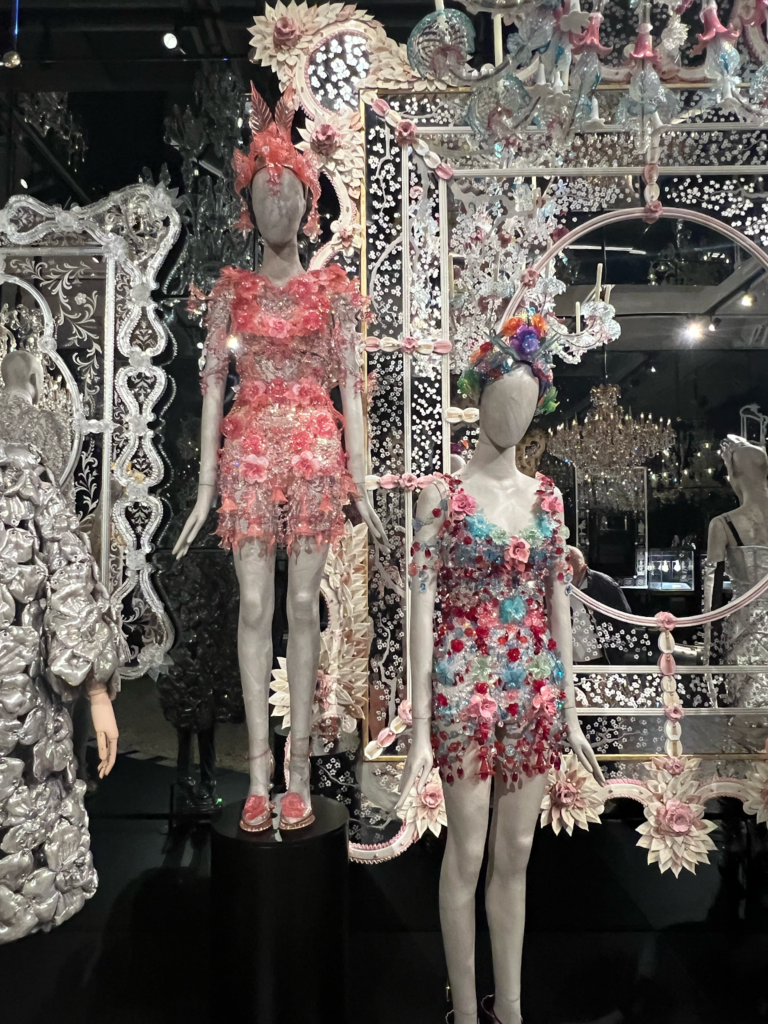
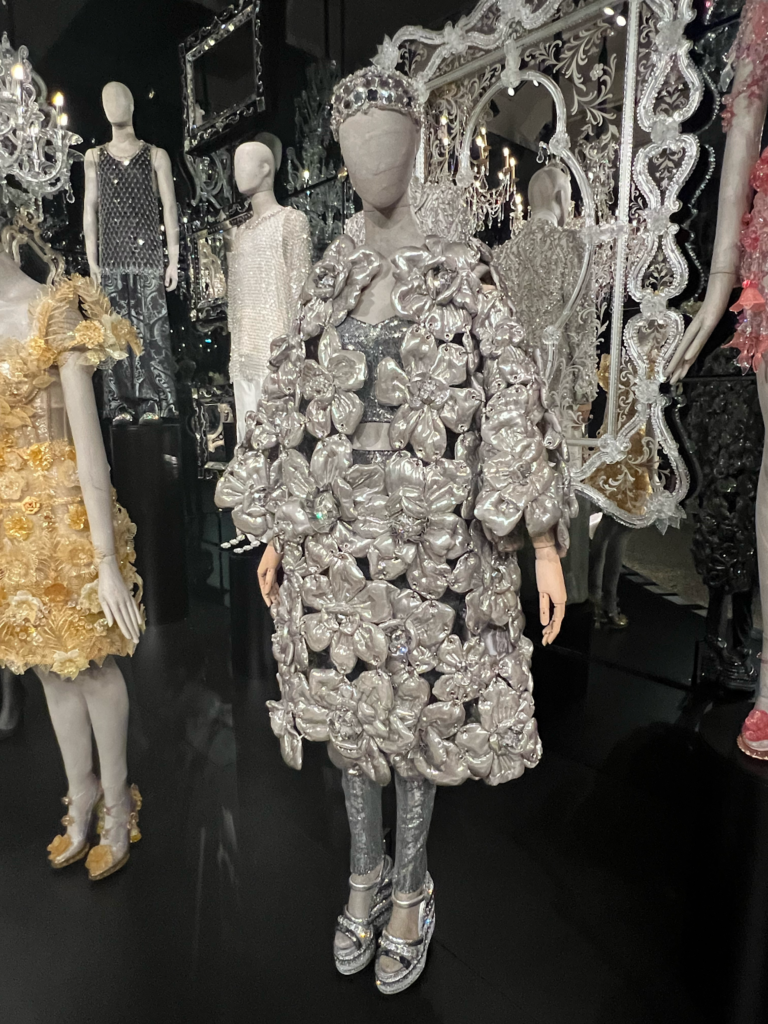
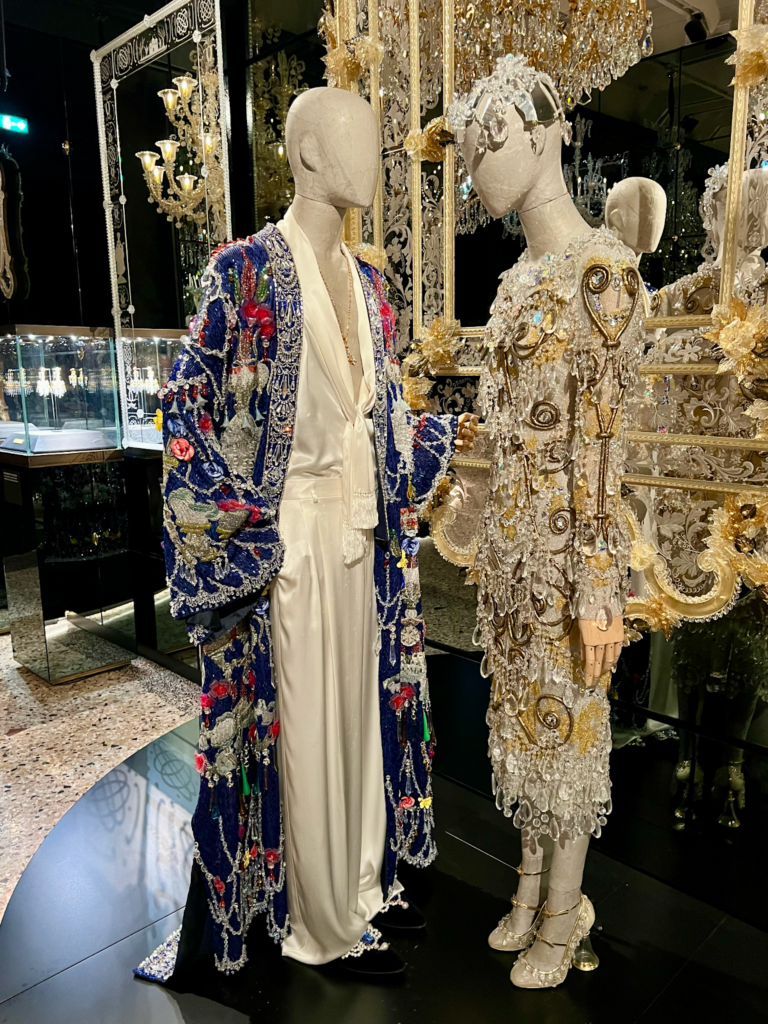
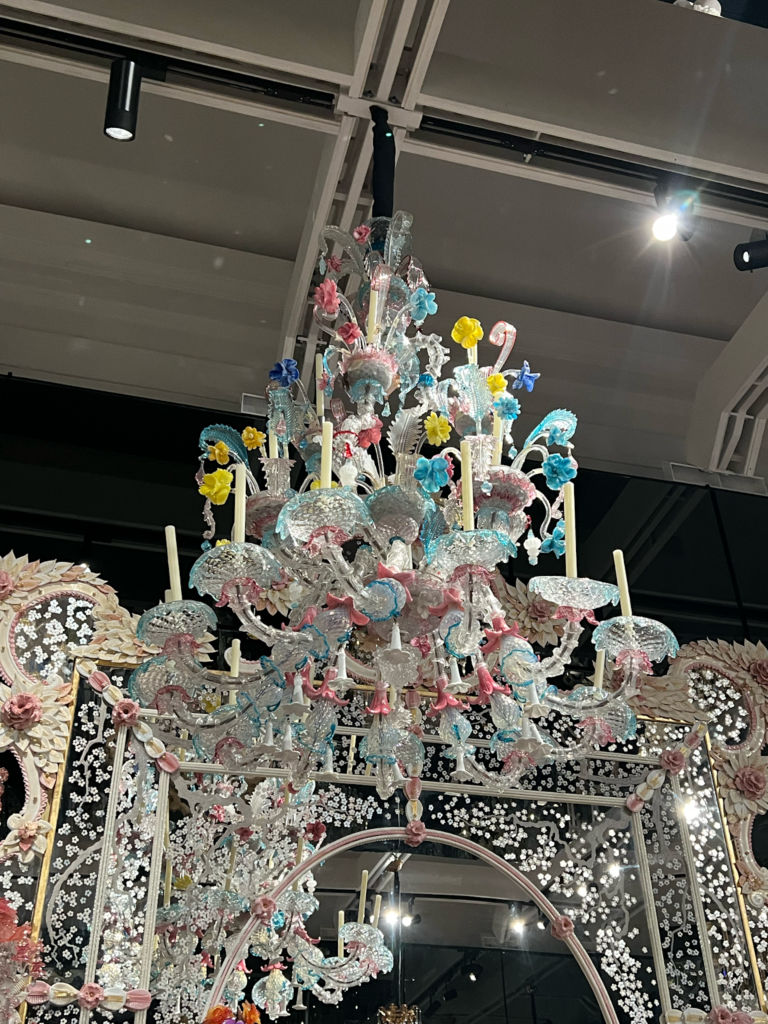
The Leopard
Draped in iconic D&G black lace and adorned with Catholic symbols, this room felt like I had been transported to the opulent Gallery of Mirrors in Palermo. Four mirrors reflected haunting scenes from “Il Gattopardo,” while a grand chandelier radiated above, casting its vibrant hues across the space.
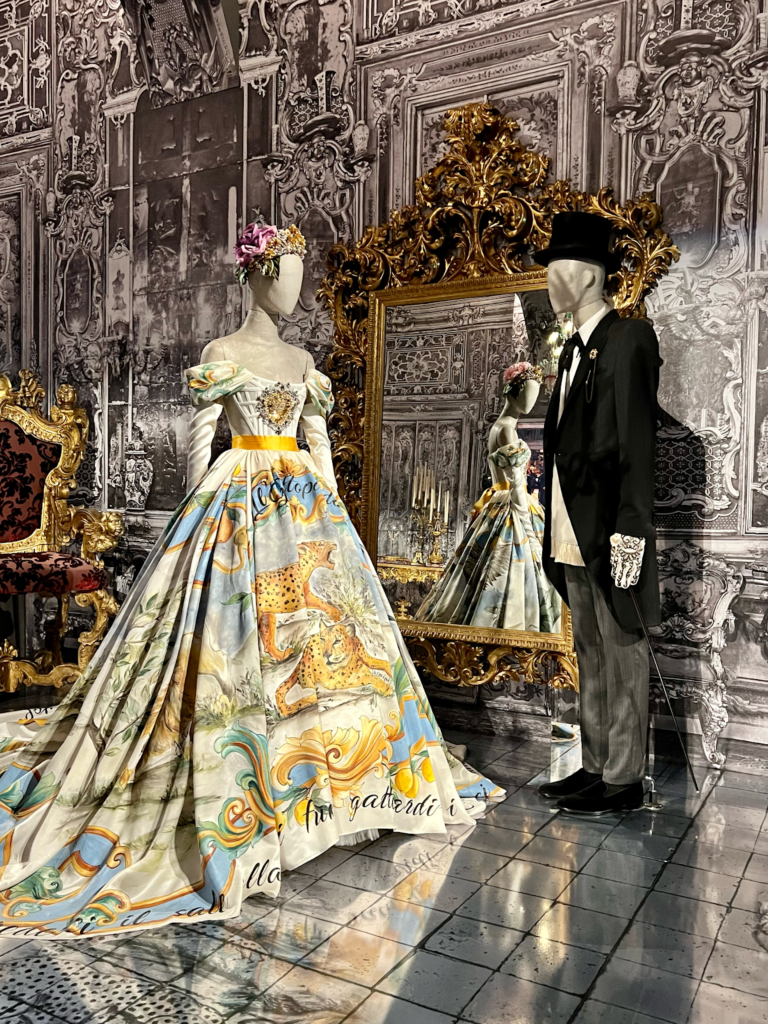
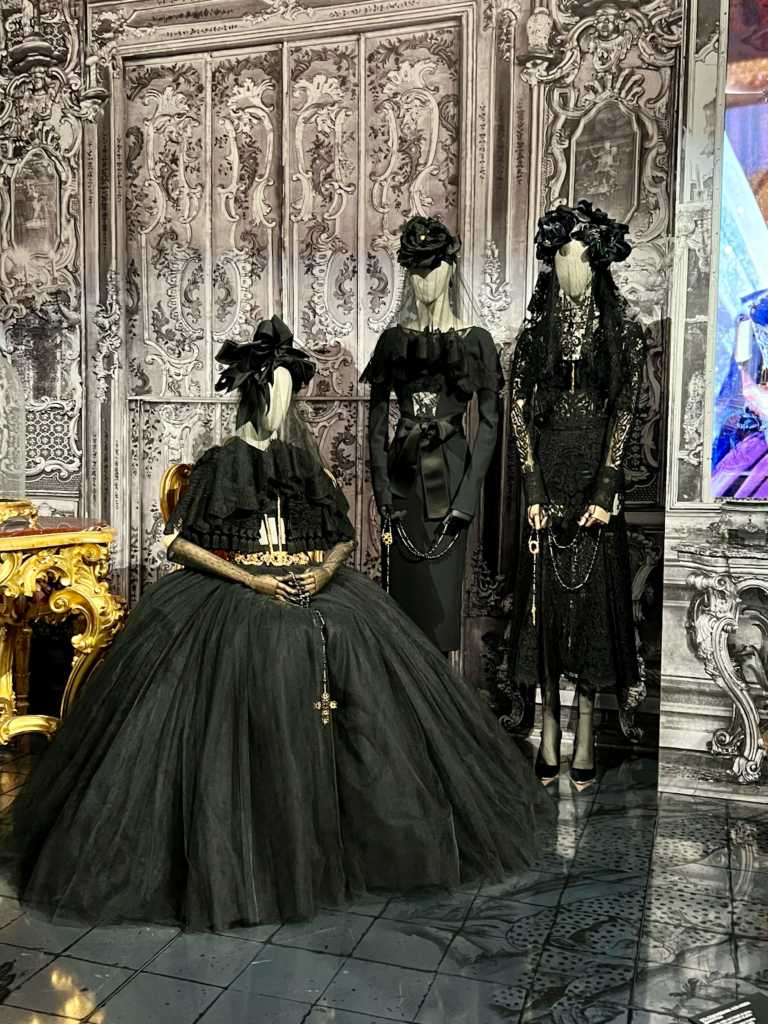
Devotion
I was shocked by how extravagant, bold, and intimate this room is all at once. The devotion symbol, a tribute to the Sacred Heart, pulsed with life, love, and beauty, drawing every visitor into its magnetic allure. The clothes here were infused with baroque flair, intricate yet theatrical, paying homage to the grand art of the seventeenth century.
Ateliers, Ornaments, and Volumes
As I moved on, the heart of the exhibition unfolded—a recreation of the designers’ atelier, alive with the hum of seamstresses and tailors. It was here that Dolce&Gabbana’s obsession with handmade excellence, fatto a mano, truly came to life. The craftsmanship was breathtaking, and I could feel the reverence they held for the Italian artisans who breathed life into their collections.
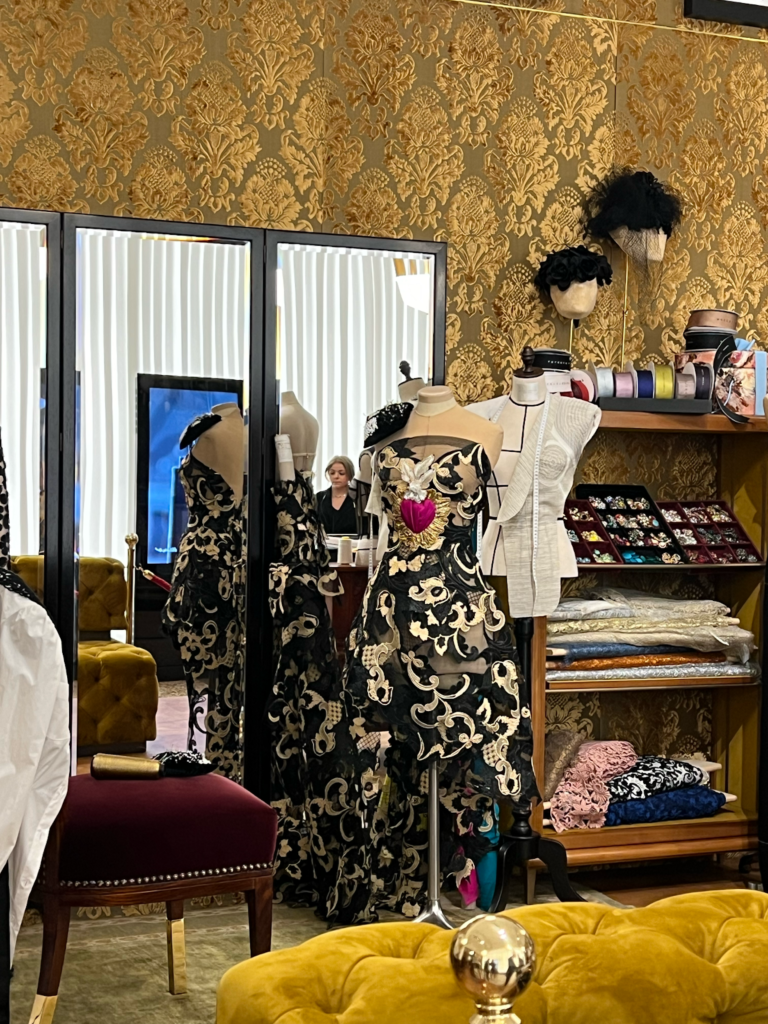
Architectural & Pictorial
The Hall of Mirrors are carefully designed to show every details of a piece. We can also see pictures of an artwork projected by projector on the walls or serve as a background to create an immersive experience. Contemporary music sets the tone for a sophisticated mapping technique that evokes the frescoes of Palazzo Farnese in Rome, as created by Annibale Carracci at the end of the sixteenth century.
Sicilian Traditions
And then came the ultimate showstopper—my favorite room of all. The curtain opened, and I was instantly greeted by the lively scent of citrus and the vibrant energy of Sicily. This room was bursting with joy—ceramics rooted in ancient Mycenaean culture, vibrant carts reminiscent of the golden age of Greece, and garments from the Alta Moda and Alta Gioielleria collections. It was a celebration of Sicily’s heart and soul. My favorite piece? A bag filled with Italian dessert staples—cannoli and tart.
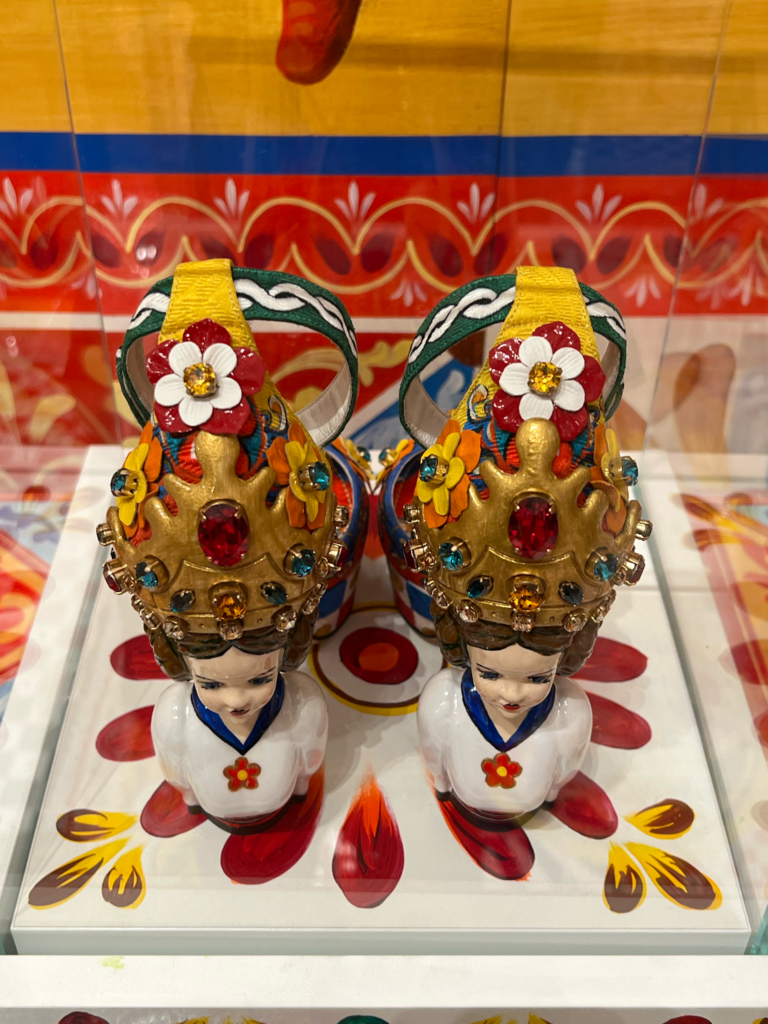
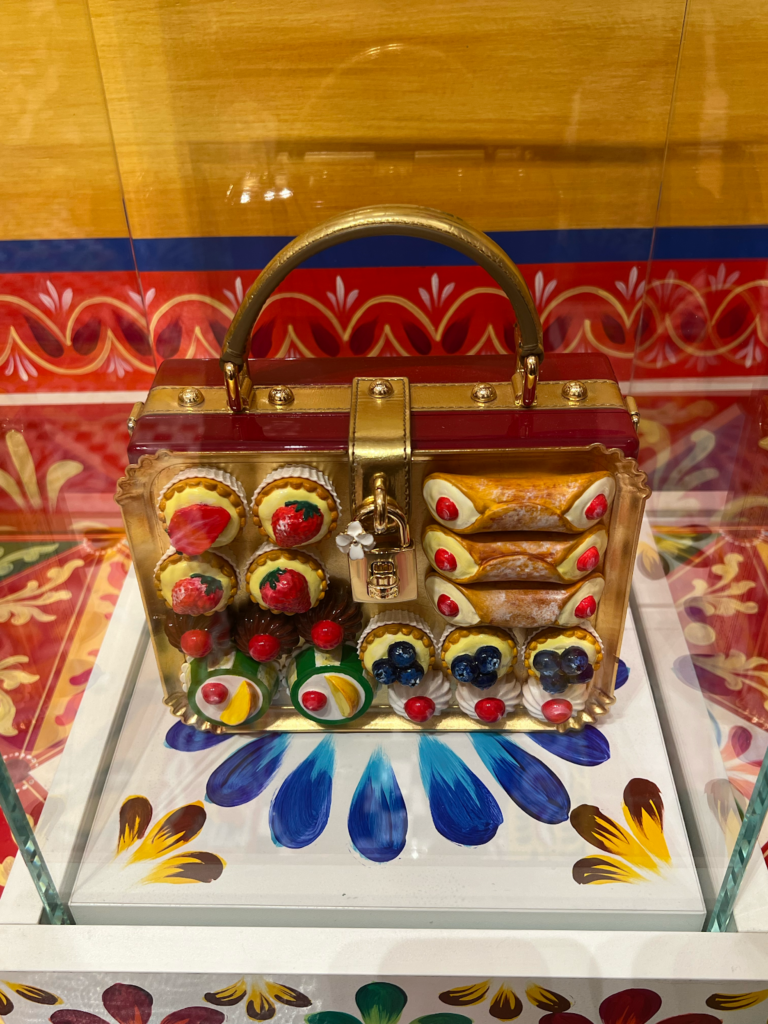
White Baroque
While I reveled in the colors and vibrancy of Sicily, my partner fell in love with the all-white splendor of the “White Baroque” room. He could smell the cool, clean scent of ceramics, and the chill of the room added an unexpected thrill. In this space, we come across textile sculptures that capture the spirit of Alta Moda, inspired by the artistry of Baroque-era stucco masters. Designers Domenico Dolce and Stefano Gabbana are particularly enchanted by the works of Giacomo Serpotta, whose white stucco designs were highly regarded in Sicily during the 17th and 18th centuries.
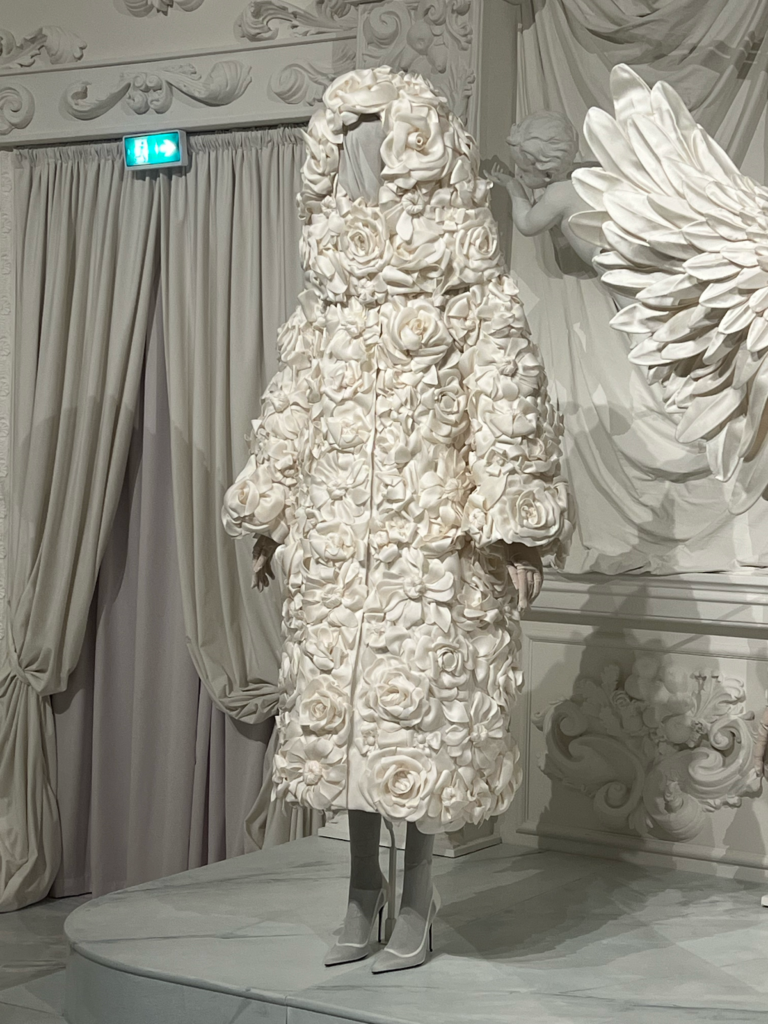
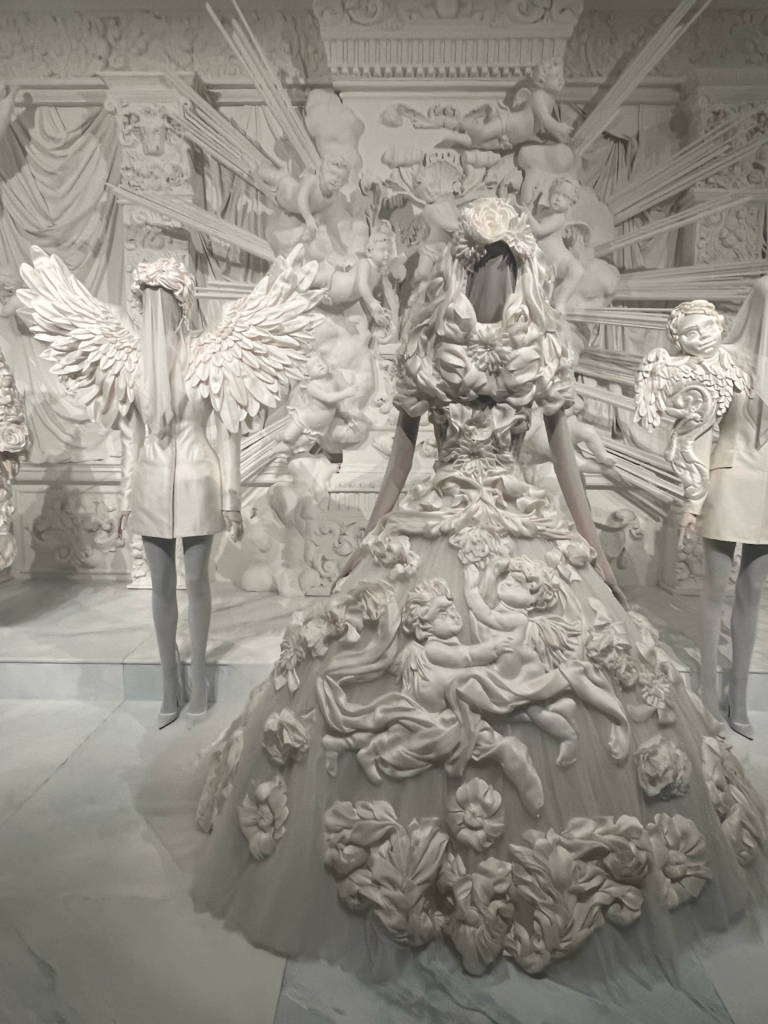
Dream of Divinity
In a temple-like setting reminiscent of the Valle dei Templi in Agrigento, the gods and goddesses of Dolce&Gabbana embody the exquisite balance of divine beauty’s perfection and fragility. This room, devoted to these mythological figures, highlights the elegance and strength of femininity. Through kimonos, draped tunics, corset dresses, and garments adorned with lurex brocade inlays, the collection honors grace and timeless allure, reflecting the core values of the brand.
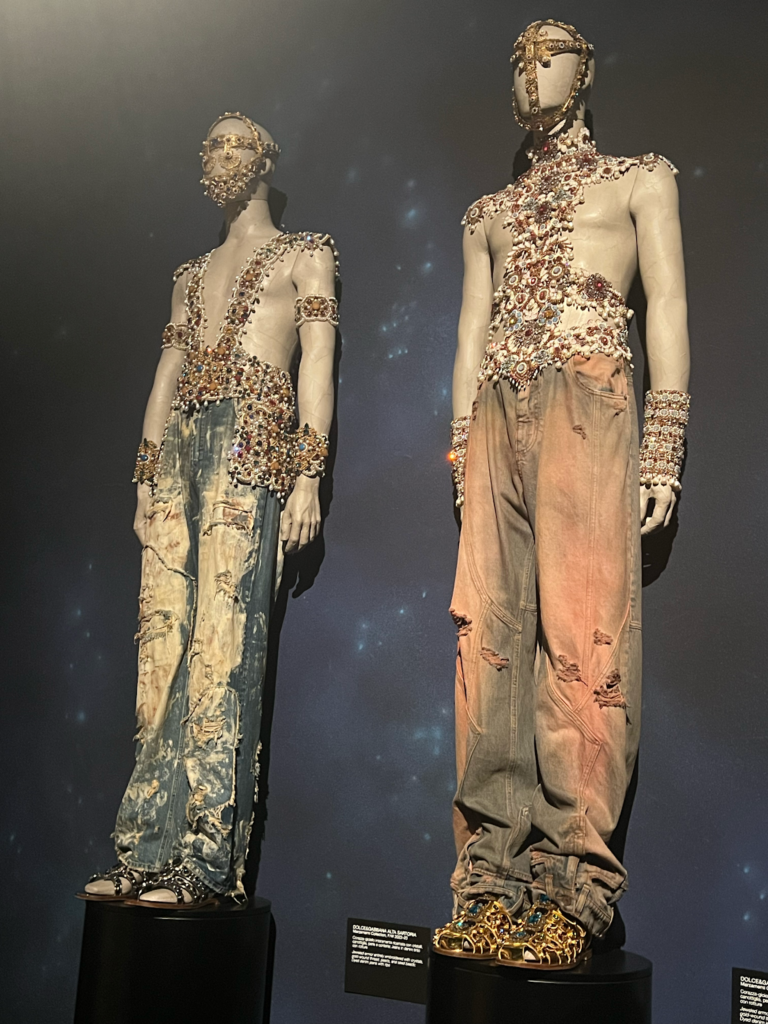
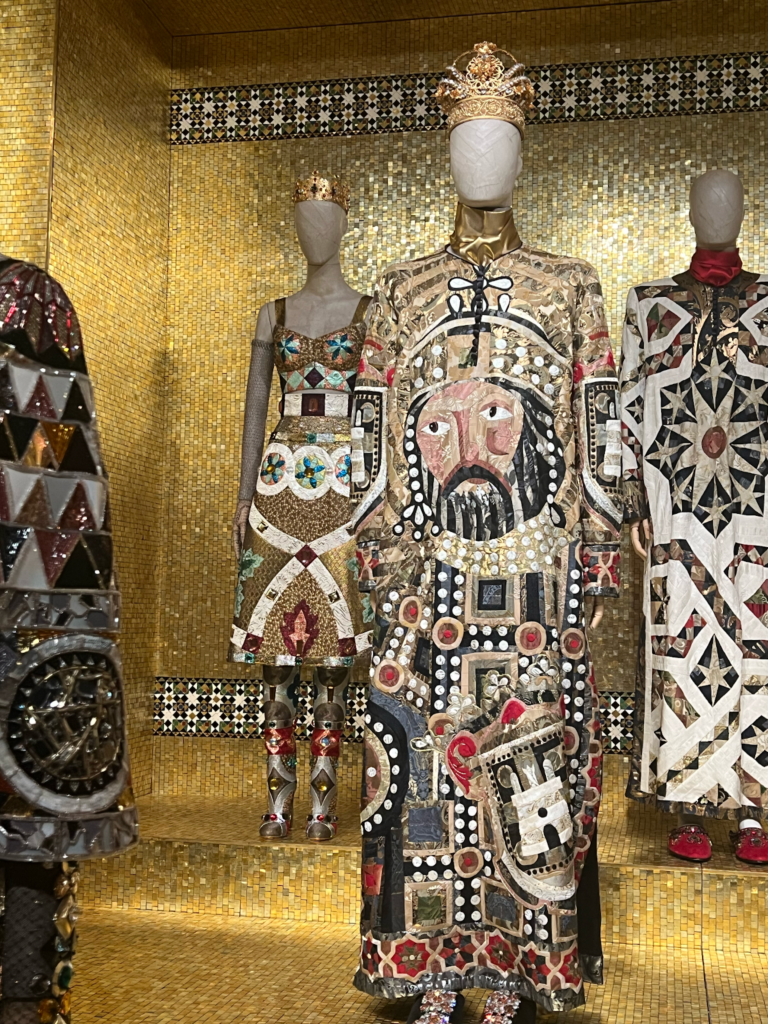
Opera
This room brought something new—a nod to opera, ballet, and the grand theatrics of Italian culture. And then, there it was—Madam Butterfly, one of my favorite plays, woven into the fabric of this extraordinary fashion narrative. Models stood around a table set for a feast, celebrating not only the art of couture but the essence of Italian life itself—food, family, and love.
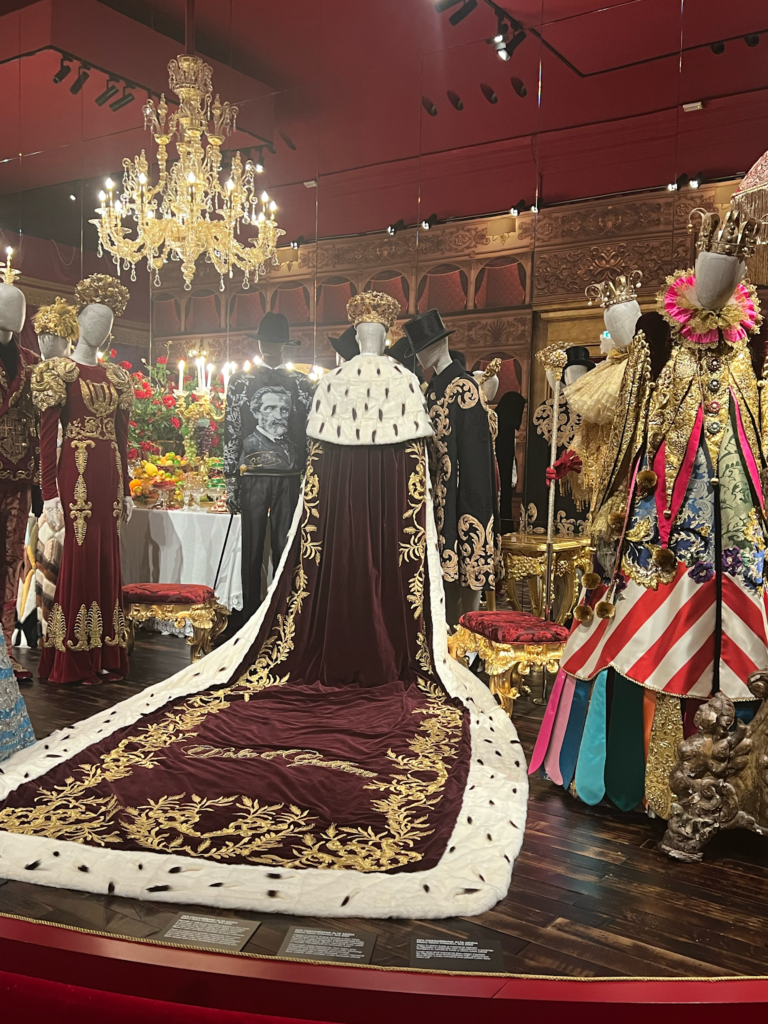
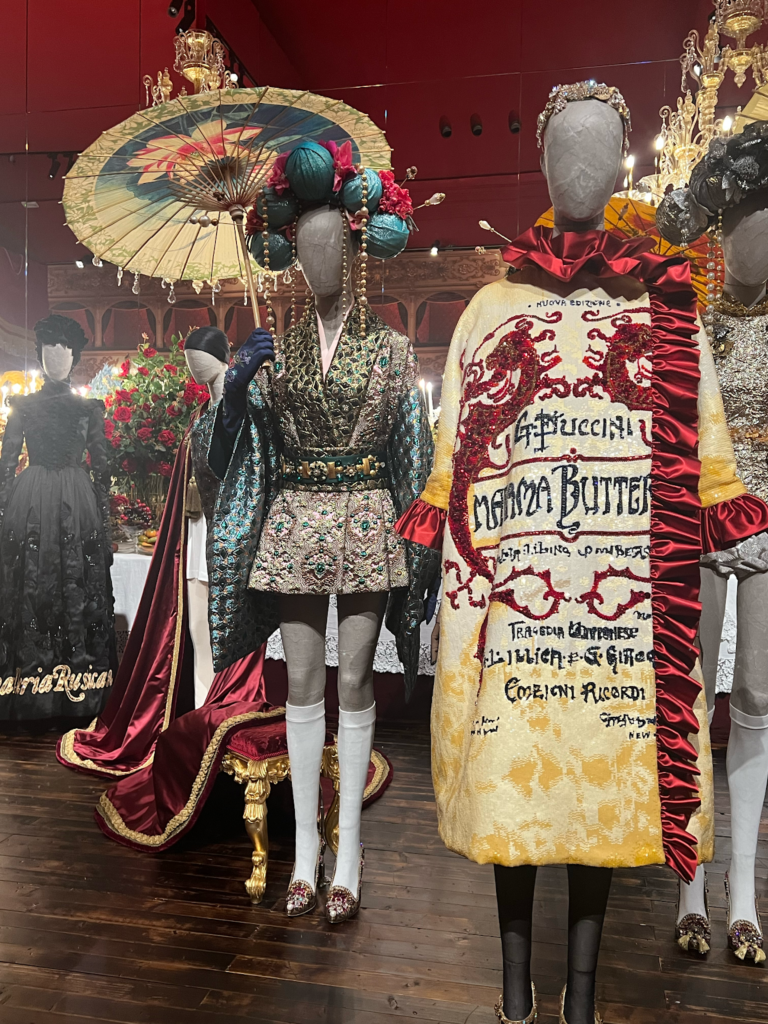
When we finally reached the end of the exhibition, I was left breathless. Each room, each curtain pull, had been an immersive experience that tantalized every sense—sight, sound, scent. The craftsmanship, the storytelling, the sheer beauty of it all—it was, without a doubt, the most magical fashion journey I had ever taken. And on that rainy Milan day, I felt like I had become a part of that celebration.
